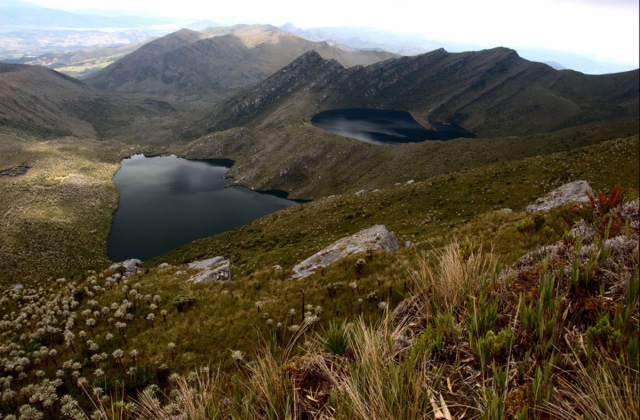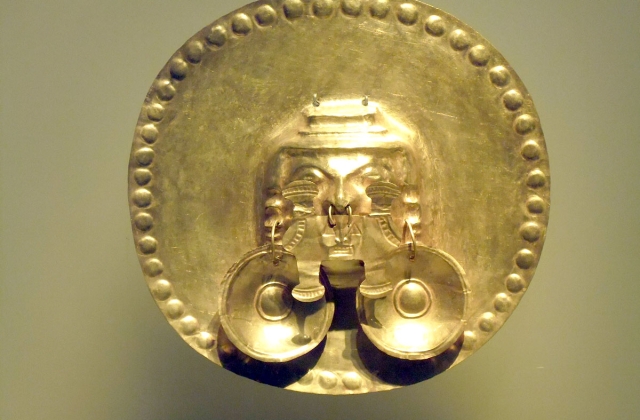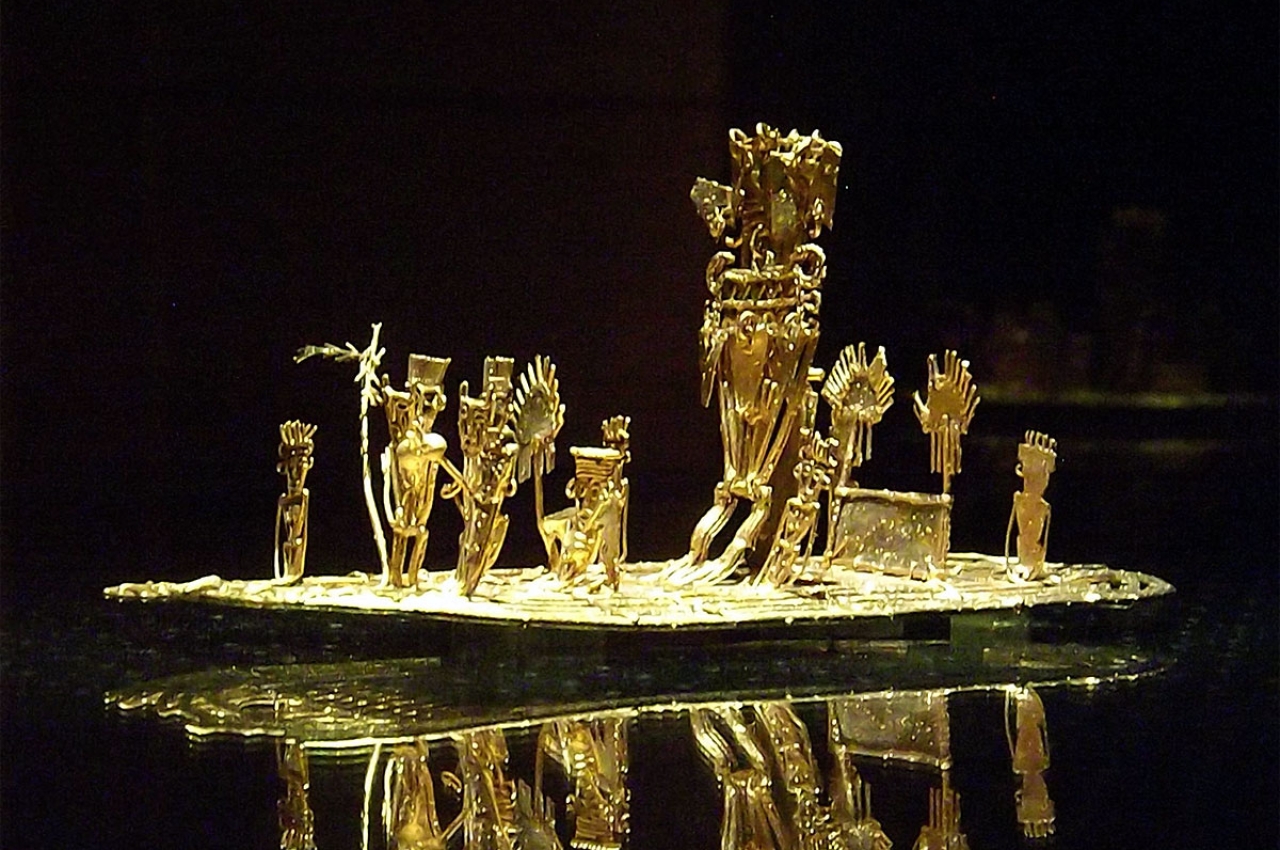You don't need to travel far from Bogotá to go on a great adventure in one of Colombia's most legendary travel destinations. Nestled in the Andes mountains just northeast of the city, in the Chingaza National Natural Park, lie the Siecha Lakes. Famous for their association with El Dorado – the lost city of gold – these glacial lakes, along with Lake Guatavita, have captured the imagination of adventurers for centuries. Before the Spanish colonization of Colombia, this region was home to the ancient Muisca people, with unique customs and fascinating religious traditions. It is from these traditions that the legend of El Dorado was born.
 photo by Luis Alejandro Bernal Romero
photo by Luis Alejandro Bernal Romero
The Muisca people
The migration of the Muisca people to the Andean highlands (now Colombia’s Eastern range) can be traced to sometime between 5500 and 1000 BCE. They are one of four groups of advanced indigenous people in the Americas, along with the Incas, Aztecs, and Mayas. The Muisca were accomplished farmers, potters, and craftsmen, and many of their relics can be seen in museums today. They are especially famous for their intricate and beautiful gold creations. While we can look at these works of art and marvel at their value, the Muisca were simply using any raw materials that were easily accessible at that time, and that included gold, copper, silver and nickel. It had no monetary value to the Muisca, but it was highly revered for spiritual uses.
Chiefs, gods, and the City of Gold
The coronation of a new chief was an elaborate affair for the Muisca and where the legends begin. When the time came for a new chief to be appointed, he was stripped down and covered with a sticky residue, followed by a fine coating of gold dust. The future chief became a literal golden man, and El Dorado means “golden one” in Spanish, which is where the legend begins. Not only was the future chief gilded, but he was sent out to the middle of one of the sacred lakes on a raft laden with treasures. In the center of the lake, he would dive into the water and cleanse himself of the gold dust, and the treasures would be thrown into the lake as an offering to the gods to help create harmony and balance in the land and among the tribes. Eventually, the stories of this ceremony spread far and wide, becoming more and more fantastic, until finally the Spanish heard tales of the golden city of El Dorado, with streets paved with gold and emeralds. These tales would fuel the exploration of the Americas and lead to the colonization of Colombia.

A golden reputation
The gold-hungry Spanish made many attempts to capture the wealth of the Muisca and find El Dorado. Their efforts were often extreme, even attempting to drain lake Guatavita in 1545. They didn’t just pillage the relics of the Muisca people, they learned to mine, and an estimated $639,000,000 worth of gold was mined from Colombia between 1537 and 1886. Gold is still mined in Colombia, with 85,000 ounces of gold discovered since 2000. And while there are no cities of gold or streets paved with emeralds, Colombia does export the finest emeralds in the world, lending credibility to the El Dorado myths, and proving that Colombia deserves its golden reputation.
Explore the natural beauty and wonder of the Andean highlands and the unique páramo ecosystem on the Siecha Lakes day hike or the Chingaza Suasie day hike. The majestic natural treasures of Colombia are still waiting to be discovered by you.

 photo by Young Shanahan
photo by Young Shanahan